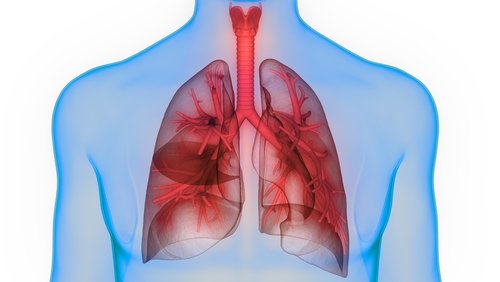Scleroderma Patients with Low Gas Exchange May Have Higher Risk of PH, Study Says

Almost a quarter of systemic sclerosis (SSc) patients with reduced gas exchange develop pulmonary hypertension (PH) within three years, according to a recent study that used right heart catheterization to measure pulmonary arterial pressures.
Regular tests to assess PH, including right heart catheterization (RHC), might be useful in this group of SSc patients, researchers suggest.
The study, “Incidence of pulmonary hypertension and determining factors in patients with systemic sclerosis,” was published in the European Respiratory Journal.
Pulmonary hypertension — elevated pressure in the lungs’ arteries — is a common complication and a leading cause of death in systemic sclerosis patients.
A mean pulmonary arterial pressure (mPAP) of more than 25 mmHg at rest is classified as PH (the normal range is 8-20 mmHg). SSc patients with mPAP between 21-24 mmHg are more likely to develop PH than patients with normal mPAP values. It is thus unclear how to classify and manage patients with borderline mPAP levels.
Also, SSc-associated pulmonary arterial hypertension (SSc-APAH) has been linked with low gas exchange — a diffusing capacity for carbon monoxide (DLCO) of less than 60%.
Diagnosing PAH in these patients is essential for them to receive the best and most timely treatments. The most reliable method to diagnose PH is right heart catheterization, where the blood pressure in the right ventricle of the heart is measured.
The multicenter DETECT study (NCT00706082) evaluated screening tests and the incidence of PH/PAH in 490 adults diagnosed with SSc with low gas exchange. Right heart catheterization was performed at the beginning of the study and after three years.
Now, researchers investigated the incidence of PH in SSc patients and the risk factors for PH during follow-up. The study included participants of the DETECT study in the London and Heilderberg centers who did not have PH at the beginning of the study, and 10 additional eligible patients without PH from each center.
A total of 96 patients with normal mPAP values at baseline were followed for a median of three years. A second RHC was performed in 71 patients.
Among those 71 patients, 18 (25.3%) developed PH, and five (7%) developed SSc-PAH.
The likelihood of having PH in follow-up tests was significantly higher in patients with mPAP between 21-24 mmHg at the beginning of the study, than in patients with normal pressures.
“This provides further evidence that borderline pulmonary arterial pressure is a possible intermediate stage in the development of pulmonary hypertension,” researchers wrote.
High pulmonary vascular resistance at baseline, or the start of the study, was consistently found to be a predictor for PH development during follow-up.
The results suggest that “a low DLCO [gas exchange] may indicate the need to perform closer clinical and invasive follow-up in patients with SSc,” the team wrote.
“In a selected cohort of SSc patients, pulmonary pressures appear to rise progressively, leading to a development of manifest PH in 25% within 3 years,” researchers wrote.
The team emphasized that larger studies are needed to clarify the significance of borderline mPAP levels in the development of pulmonary hypertension in SSc patients.






